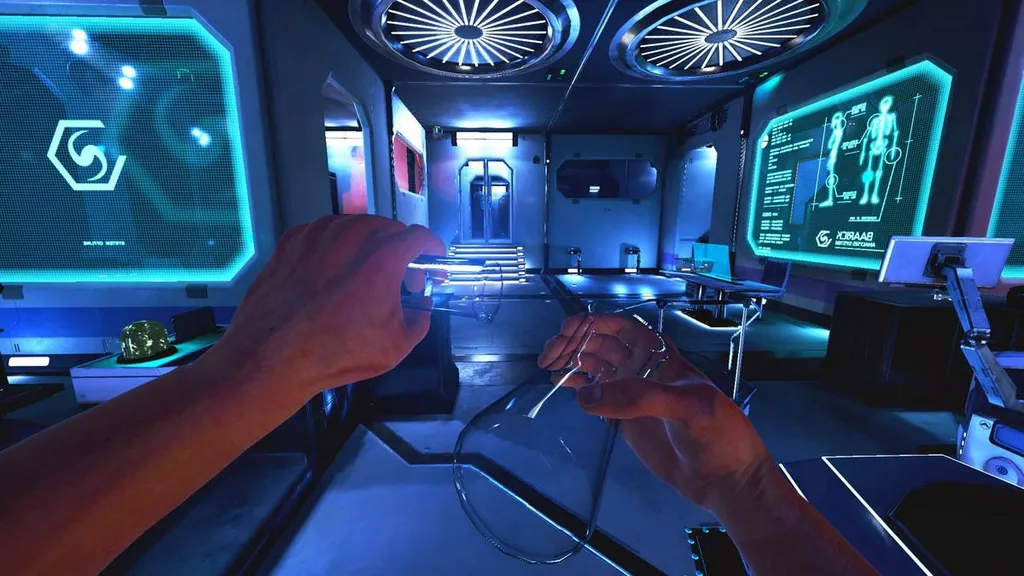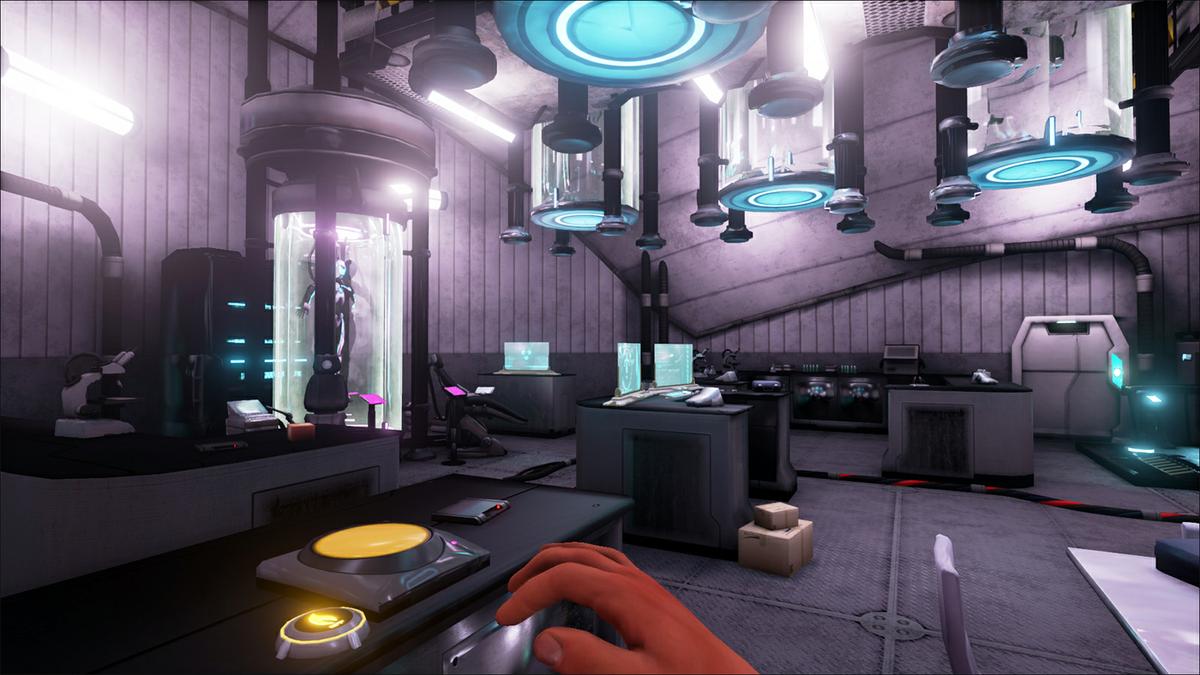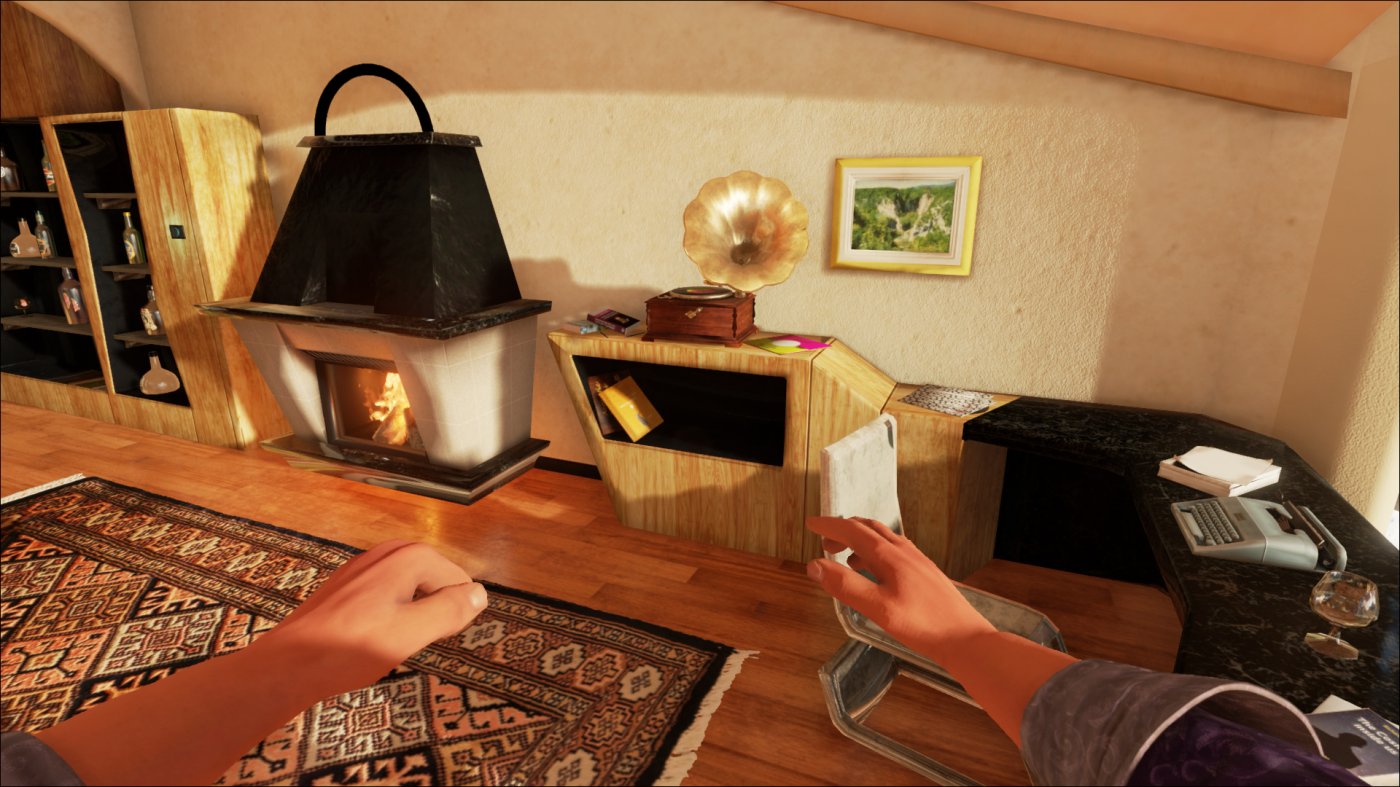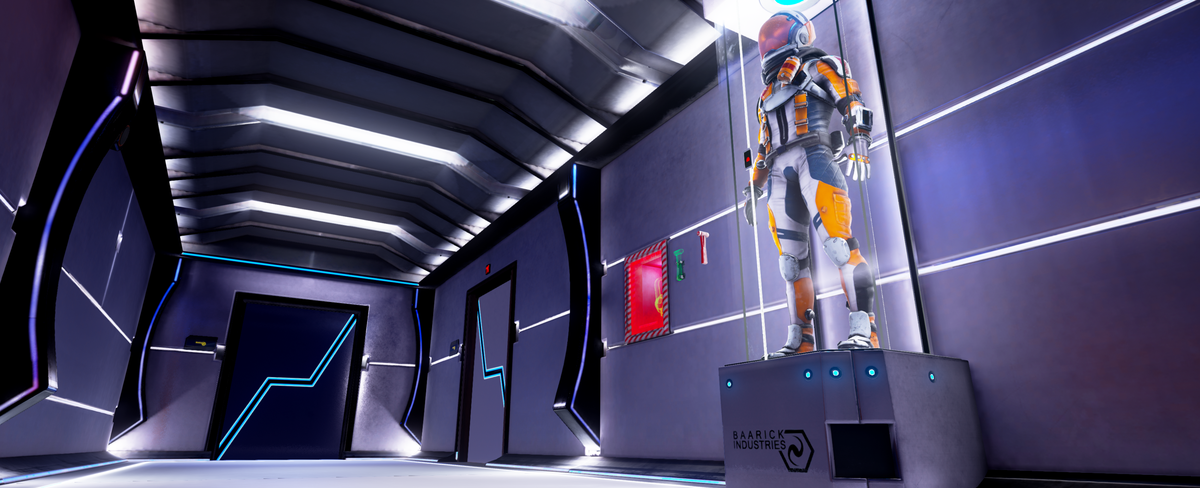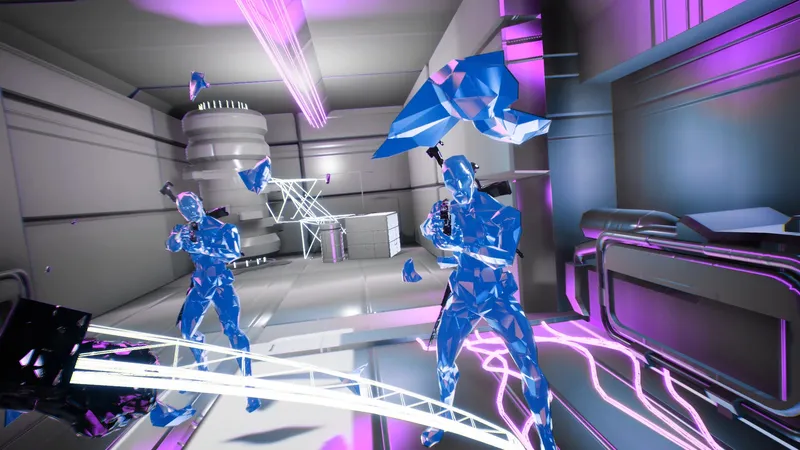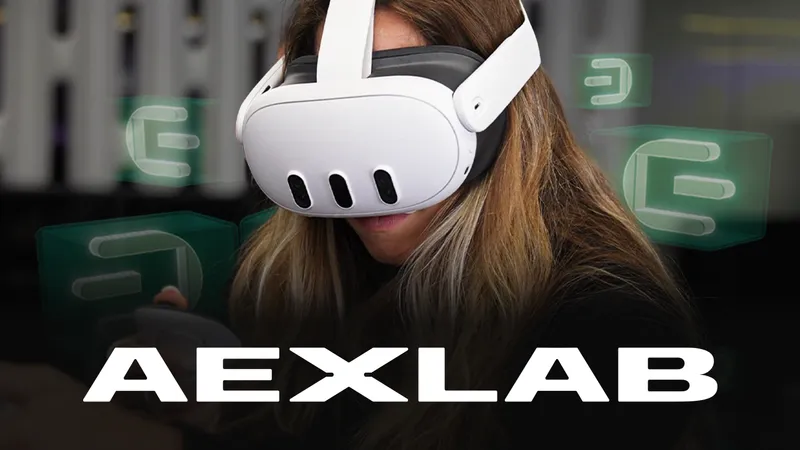Loading Human is a Kickstarter success story from two years ago that falls somewhere in the middle of “perhaps too ambitious” and “safely exploring adventure genre tropes.” The natural interaction system aims to make VR even more immersive than it is already by eschewing the need for inventories and menus all together. It originally started as an Oculus Rift title and has evolved to include multiplatform support for Rift, Vive, and PS VR. Its ambitions remain quite high, but whether or not it can deliver on its lofty goals remains to be seen.
If you’ve been following Loading Human’s development, then you should be aware that it’s an episodic series, with this first entry, known as Chapter 1, planned as an approximately 4 hour adventure where you play as a man named Prometheus. The game follows a non-linear progression, where each section of the game takes place at a different points in time, jumping forward and backward along the timeline to tell the story.
The basic premise revolves around Prometheus’ search fro the Quintessence, a resource that will allow his father to escape death. You’ll also explore your relationship with Alice, the female character shown in the trailer above, where the motion capture and facial syncing technology is on its best display.
Since Loading Human is playable on so many different platforms — Oculus Rift, PS VR, and HTC Vive all with or without motion controllers — the team at Untold Games have created a flexible control system. For this preview, I was given the chance to try out the game on both a PS VR using the Move controllers, and an Oculus Rift using an Xbox One gamepad.
In the case of the PS Move controllers, it was a bit of a mixed bag. A lot of care was put into designing interactions so that they feel both natural, but also avoid any of the common motion sickness issues that face so many people. The result is something that feels a bit like controlling a slow-moving tank rather than an actual person.
Essentially, you point a controller forward and hold down the trigger to start moving in the direction. You can steer a bit by turning your head, but to dramatically change your direction, you have to point a controller in a new direction and press a different button, at which point your orientation snaps to face that way. I could point over my shoulder behind me, click, and immediately turn around.
I eventually settled into a rhythm of using one controller as my “acceleration” and one to “steer” and reorient my trajectory. Everything works as intended and I never had a sense of sickness at all — which has never been an issue for me in the first place, granted — so it’s a functional movement system. However, as said, it felt more like piloting a piece of heavy machinery than it did walking around as a human.
Using the PS Move controllers, I could also reach out and interact with the world. When Loading Human was first announced, this was a bit of a revelation, although now the HTC Vive and the upcoming Oculus Touch all capture that sensation just as well. Even though it’s no longer a novelty, Loading Human still performs well in this regard.
When you pick something up, you can look at it and press a button to inspect it and listen to Prometheus’ voice over about the object. He’ll conjecture about the time his father bought him the razor, or reminisce about that book you randomly picked up off of the shelf. It’s a nice touch and the voice acting is a step up from where it was in the trailer at the top of this article, although some of the writing still made me cringe a bit at times.
The Oculus Rift gamepad version is similar in terms of locomotion. Instead of steering with the right analog stick, I’d press it in a direction and my view would snap to face that way. Since I don’t have motion controllers, I picked a hand to use with the triggers and moved it with the analog sticks when touching something.
Chances are the final release of the game will include non-comfort movement options, such as fluid turning, because as it stands, unless you need to use this system to combat motion sickness, it feels more restrictive than anything.
Visually, it looks essentially the same on both the Rift and PS VR. I didn’t notice much difference between the two, although my demos were almost a week apart.
Interestingly, Loading Human also plays with a meta concept of what it means to be inside of virtual reality. In later sections, (called Fragments, as you’re replaying memories in a simulation, not actually living them,) you actually go inside of VR simulations, within the game. Since you’re playing a VR game, that is a recreation of simulated memories, some of which include playing VR games, Loading Human is dabbling with enough “layers” here to rival Inception.
Throughout the adventure concepts of mortality, the human condition, interaction, and what exactly being human entails. It’s a lot of ground to cover for a new franchise in a new medium.
I don’t like spoiling actual content in my previews, but suffice it to say you’ll spend time exploring a scientific research facility, interacting with people, solving basic puzzles, and generally doing the types of things you’d do in other VR adventure games, such as The Assembly.
One of the most surprising aspects of Loading Human I found is that, throughout my time with the game thus far, I noticed that I developed more of a relationship and understanding with the AI system talking to me everywhere I go, than I do the primary romantic partner, Alice. Perhaps it has to do a bit with the uncanny valley effect, or maybe I’m just prone to enjoy the companionship more of robots than digital humans, but it was immediately apparent.
Alice would make eye contact with my actual face and the subtle gestures in her movement would, at times, make me feel a bit uncomfortable. In some ways, it came across as a bit too immersive at times, which is a weird thing I don’t think I’ve ever said before. Nailing the right balance is especially difficult for the budding world of VR games.
From the opening moments, the AI feels familiar and friendly, similar to EDI in Mass Effect. Alice, on the other hand, comes across as a bit of a mixed bag due to the game’s jumping timeline. In some Fragments you’re new acquaintances, just getting used to one another, whereas in others you’re meant to feel emotionally connected.
But because the game leaps forward and backwards in time so often, there is little opportunity for character development. The robot voice on the other hand? Her resolve is steadfast and our relationship strong. I found myself smiling at her quips and my retorts much more than expected.
I haven’t played enough of the game to render a final verdict, but the premise and concepts at play are intriguing enough for me to see it through to the end. Some of the controls are a bit wonky at times and I’m still not sure I enjoy interacting with other people in the game as much as I do the robots, but the ambitious plans are worth noting.
Loading Human Chapter 1 is currently slated for release on October 13th as a PlayStation VR launch title and is aiming to hit the Oculus Rift and HTC Vive at the same time.

